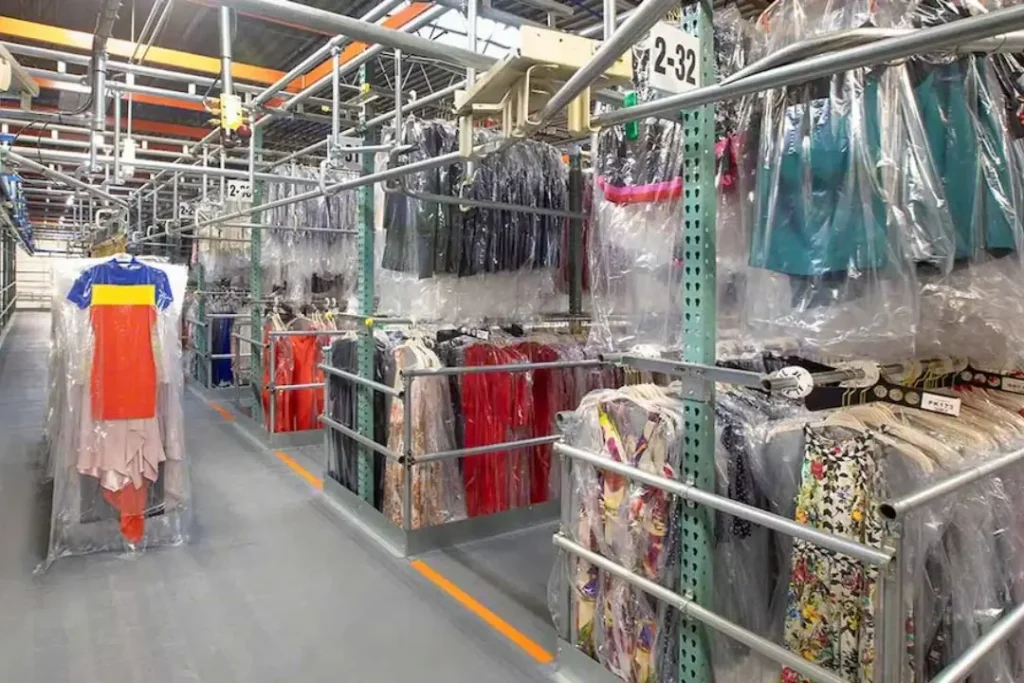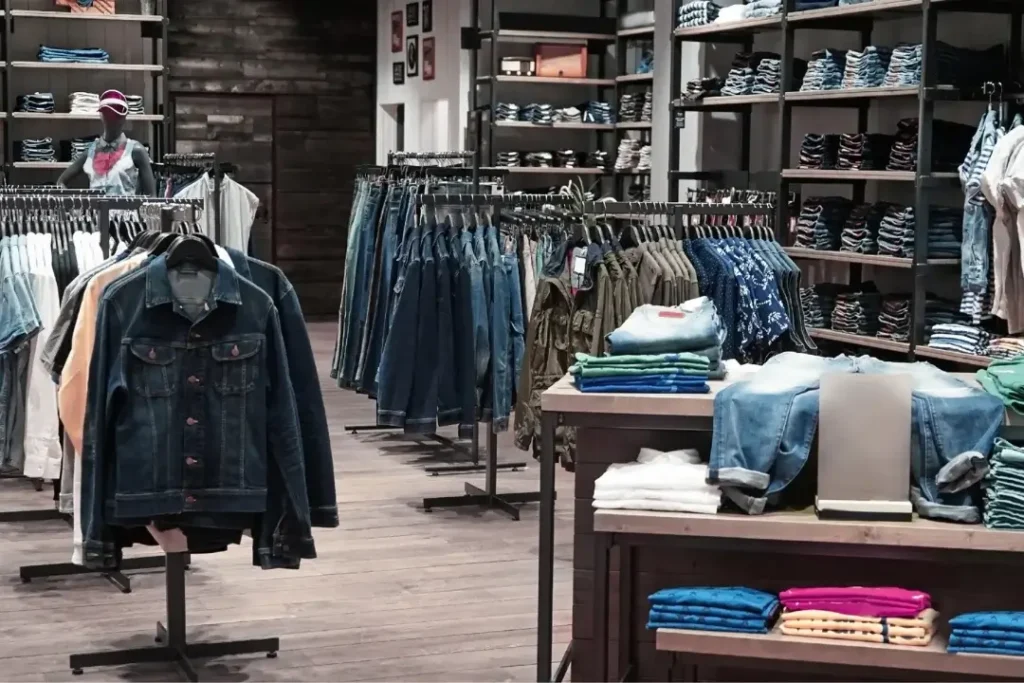
Why Clothing Brands Fail
Top Different Types of Shirts for Women and Men Top Different Types of Shirts for
Mastering Supply Chain Management in the Clothing Industry
The clothing business is worth more than $2.5 trillion in annual sales worldwide, beginning with a healthy supply chain. This huge market can exist and function because of efficient Supply Chain Management (SCM). For clothing, SCM involves all the activities required to get finished garments into stores, including raw material sourcing.
In the clothing industry, SCM deals with many moving parts, each fundamental to delivering the appropriate products at the right time. Here’s how it works:

With more than $900 billion, the global textile market relies heavily on primary raw materials, such as cotton, wool or synthetic fibers. These materials are sourced through a worldwide network of relationships as businesses seek the best for the least. Indeed, almost 60% of clothing brands depend on international suppliers to produce what is needed, which is a problem itself due to price fluctuations, geopolitical risks and sustainability issues.
This is where the genuine labor commences after securing raw materials. The garment manufacturer process includes design, fabric cutting, stitching, and finishing . Quality control is a must, so you need to do it right with each step. Fun fact: more than 85% of the clothing price comes from labor and manufacturing. Add in the fact that no one consumer product ever has quite as much riding on it as laundry detergent, and it becomes clear: Brands need to have their production game down in terms of consistency and quality.

Logistics comprise close to a quarter of the product end costs in the clothing industry. The process of moving these materials from factories to warehouses and then from warehouses to either the stores or directly to customers is complicated. Janzen: Timeliness and global challenges related to shipping and fuel prices. Since logistics determine if the product goes within time to reach its target sales window, most retailers and clothing manufacturers collaborate with various logistics partners to keep the edge.
The Typical Clothing Retailers At Least 10,000 Items At Any Given Time. Warehousing and inventory management help ensure these stock are there when needed for online orders or store displays. The use of advanced technology, like RFID tags, AI-driven stock management systems, has greatly increased efficiency. For example, retailers leveraging inventory optimization software have claimed zero stockouts leading to a 20 percent increase in sales.

Clothing companies are omnichannel businesses that need to bring their products to their customers, whether via a physical store or an online platform. With over 70% of consumers saying they want to shop across channels, either through apps, social platforms, or brick-and-mortar stores, distribution has to be seamless, an essential component of vertical care. Fast fashion has driven changes in supply chains, which have shortened lead times and responded to smaller batch runs.
Managing the clothing supply chain is not as easy as it sounds. Today, many businesses face multiple challenges, from global complexities to changing market demands. Take a closer examination of the key challenges:

The vulnerabilities of global supply chains Political instability, natural disasters, and even pandemics can upend this equation. Take the COVID-19 pandemic, for example, which resulted in more than $200 billion in lost productivity for the global supply chain sector following a multitude of factory closures and tardy shipping. And even geopolitical tensions, such as trade wars, can ripple through supply networks. These global events are unpredictable which means that the supply chains must be super adaptable to the geopolitics and thus even more resilient.
With the surge in consumer interest regarding the sustainability issue, it is a hot topic in the 21st century. More than 70% of consumers now state that they would pay a premium for green products. This drive for sustainability forces clothing brands to reconsider models of production, packaging and shipping. Be it the use of Organic materials or greener production methods; there is an incessant focus on cleaning up the environmental pigsty the clothing industry has created. However, that’s not a completely smooth sailing path. Sustainable solutions typically involve higher initial costs and more tangled supply chains.

Manufacturing hubs such as Bangladesh and China have been cloudy with issuesof low pay, poor working environments and child labor laws in the clothing space. In fact, more than 60 percent of the world’s textile workers are women, and many suffer underpaid and exploitative conditions. As consumers increasingly push for the right balance of successfully lobbying for an ever-more ethical product, brands now have no choice but to wrestle with what constitutes labor rights and how those should be embedded in the supply chain in the form of fair wages and safe working conditions amongst other things. Fixing these problems is important not only from an ethical standpoint but also for the sake of brand reputation in increasingly socially-aware markets.
Despite the strides available in SCM, a lot of clothing brands still utilize legacy systems and hands-on functions. Research published in the latter half of 2023 found that around four in ten supply chain managers within the fashion industry believe one key hindrance to supply chain success is the lack of integration between supply chain software. It is such a fast-changing world due to technology, brands need to immediately deploy tools such as AI, real-time tracking, and cloud-based systems to stay in the competition. However, if these innovations are not leveraged, it could result in inefficient processes, delays, and lost business prospects.

The landscape of clothing supply chains is very different. As new technologies and business models emerge, there are some exciting ways the industry will change.
Improved prediction of demand and inventory handling: AI is changing the game for how clothing companies forecast their demand and inventory. In fact, 47% of companies employ AI in some capacity to enhance operational efficiency. Machine learning algorithms predict which styles will perform the best and, consequently, help the brand better tailor its production accordingly, thus reducing overproduction while also utilizing zero-waste clothing production. It is also used for inventory management, and ensuring that the retailers have always what they need at the right place and time, either in-store or online.

With consumers awakening to the need for transparency around where their products are sourced, blockchain has come to the forefront to make headspace for itself. With blockchain, businesses can track the entire supply chain, from the source of raw materials to the point of sale. This boosts the guarantee that products can prove that they are sourced ethically and brands can substantiate their commitment to sustainability. The transparency of the blockchain is also aiding the growing fight against the fashion industry’s problem with counterfeiting by verifying the authenticity of products
The circular economy is a growing concept in the fashion industry. Instead of creating garments to fill up landfills, brands are on the hunt for ways to recycle, upcycle, and waste less. Clothing recycling initiatives will be spearheaded by the brands such as Patagonia and H&M as well as the usage of recycled fabrics. By re-using materials, circular supply chains alleviate wastewhile generating new raw materials meaning less impact of newproduction bringing a more sustainable business model.

Big data and analytics are changing the way SCM can be leveraged as a business tool to get insight-based actionable data we can use to optimize each phase of the supply chain. Companies can use data for informed decisions regarding inventory, production schedules, and demand forecasting. Data analytics, for instance, can pinpoint consumer behavior trends so that brands can manufacture things at the appropriate time and in the required amounts. It lessens waste and enhances efficiency as a whole.
Managing a good supply chain in the apparel segment is a strategic affair that involves the right partners and the ability to quick respond to demand fluctuations. Below are the clothing brand best practices to stay in the loop.
The supply chain landscape is changing and no company can be entirely self-sufficient in the global market. Seamless brand, supplier, and clothing manufacturer interactions are signified through collaborative relationships. When these relationships are based on trust and transparency, it results in faster resolution of issues, quicker turnaround, and greater efficiency. For instance, brands that share tight partnerships with their suppliers tend to cut lead times and boost product quality.

The fashion industry moves at lightning speed and being able to pivot is key. For example, supply chain agility provides companies the ability to respond to the unplanned changes in demand, supply or production delay. By moving production to a suitable location, or quickly reworking a design to appeal to customer preference, an agile supply chain effectively allows a clothing brand to remain competitive and reactive.
The process of inventory optimization is all about keeping that balance between having enough stock to satiate the demand without going overboard and getting overstock-ed, or missing out on sale opportunities. Just-in-Time (JIT) inventory, Economic Order Quantity (EOQ), and drop-shipping are all strategies brands employ to manage their stock efficiently. JIT works well for minimizing holding costs, as goods are only received when they are needed; whereas EOQ calculator ensures that a company is ordering as much inventory as needed to suffice demand without surplus. Brands can avoid inventory altogether with drop-shipping, shipping directly from suppliers to consumers
Brands must also adapt to technology to remain competitive. Enterprise resource planning systems, warehouse management systems and real-time tracking are integral underpinnings of optimal supply chains. Using a WMS to automate various processes such as inventory and order pickings helps reduce human effort as well as cost, thereby increasing operational effectiveness. Secure real-time tracking systems guarantee that the products are exactly the place it ought to be which leads to better delivery time and customer satisfaction.

That said, a good Supply Chain Management (SCM) is not only about logistics but also financially affecting a clothing brand. Here’s how:
From the selection of raw materials to choosing manufacturing partners to transportation, every decision made in the supply chain impacts production costs. Optimized SCM reduces wastage, time to market, and operational costs, ultimately translating to higher profitability. Conversely, ineffective supply chains may result in overstocking, reduced merchandise turnover, and increased expenses, which in turn compress margins.
Today , that means speedy, dependable, quality products every time. This means that SCM can directly impact the delivery, availability, and quality of the products. By managing the supply chain effectively, organizations can minimize stockout situations and delivery delays, let the customers get the product at their preferred time, and let them enjoy their required products at their own times, which in turn leads to high satisfaction and repeat the company.

A transparent, ethical, and efficient solution enhances a brand’s reputation. People increasingly care about where and how stuff is made. Companies and brands that are committed to ethical sourcing, sustainability, and efficiency are viewed as trustworthy and consistent and are more likely to retain consumer loyalty. In fact, half of the consumers are even willing to pay extra for brands with transparent and sustainable practices.
Supply chain management plays a major role in the success of the clothing companies. Every step, from raw material acquisition to finished product delivery, impacts the price, quality and overall customer experience. Brands that scale back their supply chains will improve efficiency and gain customer loyalty and brand reputation. With the driving force of technology behind the development of this management, SCM will continue to evolve and become an increasingly important pillar in a brand’s competitiveness.
Brands will also need to think outside the box to keep up with supply chain trends like automation, blockchain and sustainability in the future. The clothing sector will have to traverse these challenges and change the technology playing field to move forward.
The idea is to maintain a smooth cycle of materials and goods from design to the consumer with the lowest possible cost while maintaining the quality of the product.
Such interruptions can cause delays, higher costs, stockouts, and damage to brand reputation, thus causing low customer satisfaction.
Ongoing global disruptions, sustainability concerns, and the need for ethical manufacturing practices in various hubs are among the world’s top issues today.
Absolutely, options like natural dyes, waterless dyeinAI, blockchain, and big data are some technologies that facilitate the synergy between supply chain efficiency by automating processes, minimizing manual errors, and executing them with transparency.
g, and bio-based pigments offer eco-friendly color solutions.
Expert Custom Clothing Manufcaturer

Top Different Types of Shirts for Women and Men Top Different Types of Shirts for

What You Must Know About Clothing Samples? Before You Produce a Single Garment: What You

How Much Does It Cost To Make a Hoodie A Complete Cost Breakdown for Custom

Discover the Types of Buttons Discover the Types of Buttons That Transform Style and Functionality
Most Recent Posts
Expert Custom Clothing Manufcaturer
Join our Mailing list!
Get all latest news, exclusive deals and updates.